Einzeleinwanderer / Individual Immigrants
Nach der Übernahme der Kapkolonie durch die Engländer 1806 wurde der Seeweg von Europa nach Südafika offener und es kamen viele Deutsche als Einzeleinwanderer nach Südafrika. Durch die Diamantenfunde in Kimberley und das Gold auf dem Witwatersrand kamen viele um ihr Glück im südlichen Afrika zu suchen. Einige fanden es und wurden sehr reich, andere kamen aus anderen Gründen zu Ruhm und Ehren, aber viele andere schafften sich mühselig eine Existenz oder verarmten. Diese Seite soll einige der Deutschen beschreiben, die im 19. und 20. Jahrhundert nach Südafrika kamen. Die Auswahl ist breit gestreut und weit gefasst. Die Information ist aber keineswegs allumfassend, da es kein Zentralregister für alle deutschen Einwanderer nach Südafrika gibt. Falls Sie zusätzliche Information für mich haben, dann schicken Sie mir bitte eine Mail.
After the British took over the Cape Colony in 1806 it became much easier for individual immigrants to make their way out to South Africa and many Germans settled there. Many were enticed to come to Southern Africa by the discovery of diamonds in Kimberley and gold on the Witwatersrand. Some became wealthy, others became famous for other reasons, but most others were lucky if they managed to build up a reasonable existence. This page is to highlight some of those individual Germans that came to South Africa in the 19th or 20th Centuries. The selection was specifically chosen to be as wide as possible. But at the same time, the information on this page cannot be seen as all encompassing, as there is no central registry of all German immigrants who made their way to South Africa. If you have additional information which you would like me to add, please send me an email.
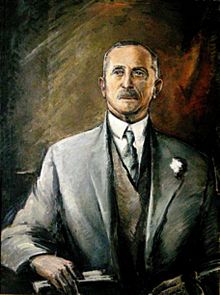 ALBU, George, *26.10.1857 in Berlin, Brandenburg, Germany (✡), emigrated to South Africa in 1876 together with his brother Leopold. Initially he worked in Cape Town, then moved to Kimberley and bought up financial interests which he sold to de Beers at a good profit. He then moved on to the Witwatersrand, where he bought the Meyer and Charlton Mine, restructured it and formed the General Mining and Finance Corporation with his brother in 1895. oo 9.12.1888 - Gertrude Rosendorff. he was created 1st baronet Albu of Johannesburg on 12.2.1912. +27.12.1935 in Johannesburg. (General Mining was taken over by Federale Mynbou in 1965, but kept the General Mining name. It joined with Union Corporation in 1980 to become Gencor. Gencor was split up in 1997, with the gold assets now held by Gold Fields Ltd.) (43) (44) (49) (52)
ALBU, George, *26.10.1857 in Berlin, Brandenburg, Germany (✡), emigrated to South Africa in 1876 together with his brother Leopold. Initially he worked in Cape Town, then moved to Kimberley and bought up financial interests which he sold to de Beers at a good profit. He then moved on to the Witwatersrand, where he bought the Meyer and Charlton Mine, restructured it and formed the General Mining and Finance Corporation with his brother in 1895. oo 9.12.1888 - Gertrude Rosendorff. he was created 1st baronet Albu of Johannesburg on 12.2.1912. +27.12.1935 in Johannesburg. (General Mining was taken over by Federale Mynbou in 1965, but kept the General Mining name. It joined with Union Corporation in 1980 to become Gencor. Gencor was split up in 1997, with the gold assets now held by Gold Fields Ltd.) (43) (44) (49) (52)
ALBU, Leopold, *10.3.1861 Brandenburg, Germany (✡), emigrated to South Africa in 1876 together with his brother George. Initially he worked as a produce dealer in Cape Town, then as diamond broker in Kimberley before going to Barberton in 1884 and becoming a member of the Stock Exchange. In 1895 he founded the General Mining and Finance Corporation with his brother George. oo 19.8.1901 - Adelaide Burton. +19.3.1938. (General Mining became part of Gencor in 1980. Gencor was split up in 1997, with the gold assets now held by Gold Fields Ltd.) (1) (44) (49) (51)
ALEXANDER, Morris, * Posen (✡), served on Cape Town City Council, entered Parliament in 1908 and remained for 20 years, in 1912 was Vice President (Cape) of the South African Board of Deputies (2)
ALEXANDER, Bernard, * Posen (✡), in 1912 was Vice President (Transvaal) of the South African Board of Deputies (2)
AUERBACH, Franz (✡), *June 1923 Frankfurt a. d. Oder, Brandenburg, Germany, to Erich and Alice who qualified as a dentist. She was sacked from the municipal dental clinic with Hitler's rise to power. Franz spent many years in Luxembourg, living with another family, kept a positive attitude and supported his mother, +2004 (1) (3)
BAERVELDT, friend of Hans Merensky, founding member of LP (Lydenburg Platinum) Syndicate. (67)
BAUMANN, Isaac (✡), first director of the O.F.S. National Bank, married to Caroline (relative of Isaac Haarburger) (2)
BECKER, Gustav, represented a number of German firms in South Africa around 1924, friend of Hans Merensky, founding member of LP (Lydenburg Platinum) Syndicate. (67)
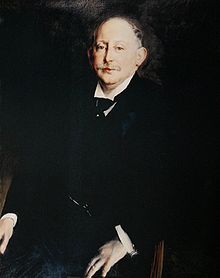 BEIT, Alfred, *15 February 1853 Hamburg, Germany (✡). Beit was sent to Kimberley in 1875 by Jules Porges & Co. as a diamond buyer. He was a close friend of Cecil Rhodes and together they gained control of most of the Kimberley output via De Beers Mine. He worked with Hermann Eckstein and Sir Joseph Robinson to build further companies including Wernher, Beit & Co and the Robertson Syndicate. He put a lot of effort into developing infrastructure in Southern Africa, including Northern and Southern Rhodesia (Zambia and Zimbabwe). He founded the British South Africa Company in 1888 and moved to London in the same year. He supported the Jameson Raid in 1895. +16 July 1906 in London. Beit Bridge - the border crossing between South Africa and Zimbabwe is named after Alfred Beit. (64) (66)
BEIT, Alfred, *15 February 1853 Hamburg, Germany (✡). Beit was sent to Kimberley in 1875 by Jules Porges & Co. as a diamond buyer. He was a close friend of Cecil Rhodes and together they gained control of most of the Kimberley output via De Beers Mine. He worked with Hermann Eckstein and Sir Joseph Robinson to build further companies including Wernher, Beit & Co and the Robertson Syndicate. He put a lot of effort into developing infrastructure in Southern Africa, including Northern and Southern Rhodesia (Zambia and Zimbabwe). He founded the British South Africa Company in 1888 and moved to London in the same year. He supported the Jameson Raid in 1895. +16 July 1906 in London. Beit Bridge - the border crossing between South Africa and Zimbabwe is named after Alfred Beit. (64) (66)
BEIT, Otto, *7.12.1865 in Hamurg, Germany (✡). He is the younger brother of Alfred BEIT. He moved to London in 1888 to work for Wernher, Beit & Co. In 1890 he moved to South Africa and helped to develop Rand Mines and became a member of Herman Eckstein & Co. He moved back to London in 1896, after also having supported the Jameson Raid in 1895. After Alfred Beit's death, Otto administered both the Rhodes and the Beit Trusts. He supported the creation of the University of Cape Town as well as the Johannesburg Art Gallery, and many institutions in Britain. +7.12.1930 London.
BENEDICK, Franz L., *9.7.1915 in Berlin (✡), to Paul and Aenne Benedick. From the age of 15 he worked for a French textile company, and at the age of 20 left Germany. He took advantage of the 'open door' policy of the South African Government, and in 1935 left from Genoa on the Dullo with four friends, Horst Loewenheim, Fritz Frank and Helmut and Lisa Hirsch, Helmut's sister. (1)
BERGIUS, Karl Heinrich, *1790 in Prussia, served in the Prussian army during the Napolenic wars, studied pharmacy in Berlin and was sent to the Cape in 1815 by Martin Lichtenstein to collect for the Berlin Museum, he was abandoned by his sponsors and friends, and died in severe poverty, +1818 Cape Town (32)
BERGMANN, Heinrich / Henry, * Dittenberg, Bavaria (✡); emigrated to the Cape in 1843, worked with P. Caro in the Mosenthal office in Graaff Reinet, opened an office in Aliwal North around 1850, which became 'Henry Bergmann & Co. Ltd.' a few years later, oo 1860 Charlotte Jenny Schuster from Frankfurt am Main. Bermann was the director of the Frontier Bank (owned by the Mosenthals), and committed suicide after a financial incident, +15.7.1866 (63)
BERGTHEIL, Jonas, *1815 in Dittenheim, Bavaria (✡); emigrated to South Africa in 1834 via his uncle Gabriel Kilian, who was co-owner of Kilian & Stein in Cape Town. Bergtheil moved to Natal in 1843, founder of Natal Cotton Company and of New Germany in Natal (1848), was elected to the first Legislative Council of Natal in 1857, +1901. (2, 63)
BOERECKE, Otto, Krupp representative in South Africa around 1924, friend of Hans Merensky, founding member of LP (Lydenburg Platinum) Syndicate. (67)
BREHM, Joachim, apothecary in Uitenhage in 1832, employed Karl Zeyher in 1832 (39)
CARO, Feibusch / Phoebus, from Posen (✡); a sailor on the convict ship Waterloo, which was headed for Tasmania but ran aground off the Cape. Caro was one of only 90 survivors. He worked for the Mosenthal brothers in their branch in Graaff Reinet. (63)
DETTELBACH, Oscar (✡), business associate of Eduard Lippert, especially in trying to gain access to mineral wealth in Mashonaland (26) (64)
DREGE, Johann Franz / Jean François, *25.3.1794 Altona, Hamburg, Germany of Huguenot descent, trained as horticulturist at Göttingen, and worked in Botanical Gardens in Munich, Berlin, St Petersburg and Riga. In 1826 Franz and his younger brother Eduard joined their older brother Carl in the Cape Colony. Carl concentrated on zoological specimens, while Franz concentrated on botanical specimens. They travelled extensively across South Africa from 1826-1833, with Franz collecting about 200,000 specimens. Franz returned to Germany in 1834, started a nursery business near Hamburg, was married in Altona in 1836. +3 February 1881 Altona (34)
DREGE, Carl Friedrich / Charles Frederic, *1791 Altona, Hamburg, Germany of Huguenot descent, moved to Cape Town in 1821 where he worked as apothecary. Once his brothers Franz and Eduard joined him in the Cape, Franz and Carl set out on extensive journeys across South Africa from 1826-1833, with Carl concentrating on the zoological specimens. Carl left for Germany in 1834 with a large load of specimens and returned to the Cape in 1836. +1868 in Hamburg-Altona. His son, Isaac Louis Drege was born in Paarl in 1853, and also became an apothecary in Port Elizabeth, botanical collector and botanical artist. (34) (35)
DÜNKELSBÜHLER, Anton, *24.12.1844 Fürth, Bavaria. Worked for Mosenthal & Sons in Kimberley from 1872, established Dunkelsbuhler diamond trading firm in 1876. Employer of Bernard, Louis and Ernest Oppenheimer. (67)
ECKSTEIN, Friedrich (Frederik). Brother of Hermann Eckstein, director of Consolidated Mines until he was forced to resign at the start of WW1. (53)
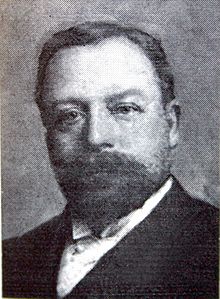 ECKSTEIN, Hermann Ludwig, *3.8.1847 Hohenheim near Stuttgart, Germany. Arrived in South Africa in 1882, started as manager of the Phoenix Mine in Kimberley. Joined Julius Wernher and Alfred Beit in partnership of Jules Porges & Co. (later Wernher, Beit & Co.). Started his own firm in 1888 (Hermann Eckstein & Co. a.k.a. the Corner House). He helped to establish the Chamber of Mines in Johannesburg and acted as its first president. Longstanding president of the Wanderers Sports Club. He left for Europe in the late 1800s. + 16 January 1893 Stuttgart. The Hermann Eckstein Park is named after him and was given to the City of Jhannesburg in his memory. It comprised 200 acres of freehold ground in the Braamfontein Forest, Parktown, generally known as Sachsenwald, and covers the current Hermann Eckstein Park, the Johannesburg Zoo and Zoo Lake, as well as the suburb of Saxenwold. (48) (49) (50)
ECKSTEIN, Hermann Ludwig, *3.8.1847 Hohenheim near Stuttgart, Germany. Arrived in South Africa in 1882, started as manager of the Phoenix Mine in Kimberley. Joined Julius Wernher and Alfred Beit in partnership of Jules Porges & Co. (later Wernher, Beit & Co.). Started his own firm in 1888 (Hermann Eckstein & Co. a.k.a. the Corner House). He helped to establish the Chamber of Mines in Johannesburg and acted as its first president. Longstanding president of the Wanderers Sports Club. He left for Europe in the late 1800s. + 16 January 1893 Stuttgart. The Hermann Eckstein Park is named after him and was given to the City of Jhannesburg in his memory. It comprised 200 acres of freehold ground in the Braamfontein Forest, Parktown, generally known as Sachsenwald, and covers the current Hermann Eckstein Park, the Johannesburg Zoo and Zoo Lake, as well as the suburb of Saxenwold. (48) (49) (50)
EHRLICH, Wolf, * Germany (✡); member of the first Jewish family to settle in the Orange Free State, Mayor of Bloemfontein, served in the Senate of the Orange Free State, in 1912 was first President of the South African Board of Deputies (2)
FRANK, Fritz; * Germany (✡); entrepreneur. Left Germany together with four friends. Married Lisa Hirsch, the sister of Helmut with whom he was in business. The two brothers in law started 'Frank and Hirsch', a well known wholesale fancy goods establishment. Fritz was very involved in Jewish Affairs, most notable for his success in fundraising for the United Israel Appeal. (1)
FRANKE, Max; * Germany, Director of Consolidated Mines until he was forced to resign at the start of WW1 (53)
FRÄNKEL, Siegfried, doctor, settler in 1808, foundation shareholder of the University of Cape Town (2)
GAUF, Johan, prospector, discovered coal in Boksburg in Dec. 1887 while searching for the eastern extension of the Main Reef Series. (67)
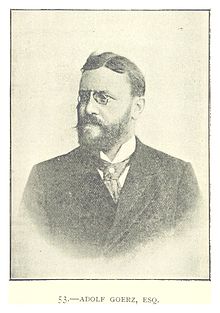 GOERZ / GÖRZ, Adolf, *18.12.1857 in Mainz, Germany. Mining engineer who emigrated to South Africa ~1888. He was the Johannesburg representative of Deutsche Bank, founded A. Goertz and Co. in 1897 (as Johannesburg's 5th Gold Mining Finance House) and developed the Modderfontein Deep Levels mine on the East Rand. +28.7.1900 in Giessbach, Switzerland. During WW1 the name of the company was changed to Union Corporation. The company went on to develop the Free State Gold fields with mines like St. Helena, Evander, etc. and the first Platinum mine, Impala Platinum. In 1980 Union Corporation was taken over by General Mining to form Gencor. (44) (45) (46) (49)
GOERZ / GÖRZ, Adolf, *18.12.1857 in Mainz, Germany. Mining engineer who emigrated to South Africa ~1888. He was the Johannesburg representative of Deutsche Bank, founded A. Goertz and Co. in 1897 (as Johannesburg's 5th Gold Mining Finance House) and developed the Modderfontein Deep Levels mine on the East Rand. +28.7.1900 in Giessbach, Switzerland. During WW1 the name of the company was changed to Union Corporation. The company went on to develop the Free State Gold fields with mines like St. Helena, Evander, etc. and the first Platinum mine, Impala Platinum. In 1980 Union Corporation was taken over by General Mining to form Gencor. (44) (45) (46) (49)
GOLDREICH, Samuel and James Harris (✡), sons of a Prussian rabbi, Property developers who helped develop Hillbrow, Regent's Park and Wanderers View. Goldreich St in Hillbrow is named after them. Samuel President and guiding spirit of the South African Zionist Federation in its early years. (2) (4)
GÖRLICH, August; *31.8.1856 in Pud, Bavaria. He joined the Bavarian army and rose through the ranks, becoming a lieutenant and sub-altern officer in 1881. He served in the royal Bavarian infantry attached to the fortress at Germersheim until 1889 when he retired from service and emigrated to the South African Republic. He started off working in the newly established National Bank, but joined the government artillery corps in 1881. He rejoined the private sector in the following year, but was appointed as first lieutenant in the Pretoria Voluntary Infantry Corps. In 1893 he became an income tax collector stationed in Lindeques Drift (up to 1894), Rietpoort (1895), Heidelberg (1896), Elandsfontein and Germiston (1899). At the start of the Boer war, he joined the Germiston commando and served in the battles at Talana, Estcourt, Colenso, Platrand, Spioenkop. After he recovered from an injury he served in Krugersdorp and Johannesburg. After the end of the Boer War he joined the army in German South West Africa during the Herero uprising, but returned to the Transvaal to become a police constable in Johannesburg. He was involved in an accident with a motor car on 15.5.1917 in Johannesburg and died the same day. (Based on an article in the Volkster of 29.5.1917 supplied by Paulo Cavaleiro)
GRAUMANN, Harry (✡), from England? started a trading business with Henry Heller in Barberton in 1884. Aged 16, in partnership with Hirschel Cohen he became a financier and stock broker of some repute. He was first Jewish Mayor of Johannesburg 1909-1910, member of Parliament in 1915, received a knighthood, Knight Commander of the Order of the British Empire (KBE) in 1923. (1) (4)
GUNDELFINGER, Isaac, *1862 and Benno, Abraham & Karl. *Babaria (Bavaria?), Germany (✡). Isaac was the first to arrive in Cape Town in 1883, settled in Beaufort West, trekked to Johannesburg in 1887 with his brother Abraham. He set up shop in a tent, but moved to a more permanent structure in President Street the same year. He dug the first well in Johannesburg in Marshalltown and sold the water by the bucket. In 1889 Benno and Karl also came to Johanneburg and Benno bought the business in 1890 (grocer, bottle store, importer of fancy goods and general hardware, tobacco and cigar merchants'. Benno sold his business to the Kaumheimer family in 1900 and retired to Switzerland. Isaac remained in Johannesburg and continued as an importer. The Gundelfinger store was burnt down during anti-German rioting during WW1. (5)
HAARBURGER, Ivan H. (✡), from Hamburg, Mayor of Bloemfontein and President of the local Hebrew congregation, founder of the Bloemfontein Orchestral Society, Vice President (OFS) of the South African Board of Deputies in 1912 (2)
HAMMERSCHLAG, Siegmund, owned the farm Tweefontein where Krugersdorp is today. In 1882 he erected the first ore-crushing machinery, a two-stamp battery. (2) (6)
HANAU, Carl, Director of the Wolhuter Gold Mining Company. He became famously rich before descending into poverty. He was an early supporter and executive member of the Wanderers Sports Club. A road in Jeppestown is named after him. (47) (48)
HASSFORTHER, Ernst; adventurer, agent for Eduard Lippert and Oscar Dettelbach in negotiations with King Lobengula, was in and out of Matabeleland from 1886 to 1890. Hassforther was "a man of no consequence" and kept bad company. (26) (64) (66)
HIRSCHHORN, Fritz (✡), cousin of Ernest Oppenheimer, Director of de Beers in 1902 until 1929 when Oppenheimer took control. Invited Oppenheimer in 1902 to take minutes at De Beers board meetings, intoducing him to Barney Barnato, Rhodes and Beit. Representative of the firm L. Breitmeyer which had taken over the diamond interests of Cecil Rhodes' Consolidated Gold Fields and Alfred Beit and Julius Wernher's Central Mining (54) (67)
HOCHFELD, Ernst, *1911 in Lemgo (Lippe) Westphalia (✡), the youngest child of Siegmund and Paula Hochfeld. Surviving WW1, his father died just before Ernst's 13th birthday, having fallen off a horse and developing a lung infection. As a result, Ernest did not have a Barmitzvah. After attending a rally in Nuremberg in 1936, Ernst decided there was no future for Jews in Germany and arrived in Cape Town 27.5.1936. He married Sigrid Maybaum in 1937, +1982. (1)
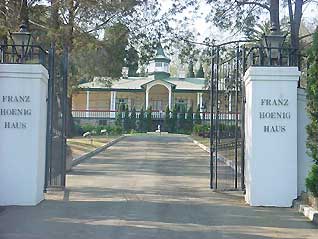 HOENIG, Franz, manager at Modderfontein for 53 years. The mine manager's house built in 1896, is today called the Franz Hoenig Haus. (7)
HOENIG, Franz, manager at Modderfontein for 53 years. The mine manager's house built in 1896, is today called the Franz Hoenig Haus. (7)
IMROTH, Gustav (✡). * Germany, cousin of Ernest Oppenheimer, Founder of Johannesburg Consolidated Investment Company (Johnnies) and Director from 1911-1920. (53) (54) (67)
JEPPE, Carl, arrived in the South African Republic or Transvaal in 1870. In 1876 (at age 17) he left school, worked as a reporter and worked as a lawyer's assistent. 1877-1879 Clerk of the Peace in Waterberg, and then 1879-1880 in Standerton. In 1880 was articled to Mr. L.P. Ford, later Attorney General of the Transvaal. Became advocate and became a partner in the firm "Ford & Jeppe". Ford and Jeppe founded Fordsburg and Jeppestown in Randjeslaagte, Johannesburg in 1886 together with Julius Jeppe sen. and Julius Jeppe jun. (in 2014, Jeppe Street in downtown Johannesburg was renamed after community activist, Rahima Moosa) (25)
JEPPE, Julius Gottlieb (sen.), *24.2.1821 Rostock Germany, father of Carl and Julius Jeppe jun., founder of the Jeppe and Ford Estate Company, land developer in early Johannesburg, including Fordsburg and Jeppestown. Jeppestown was built over most of the original Natal Camp. +16.6.1893 Johannesburg (47) (57) (58)
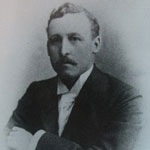 JEPPE, Julius Gottlieb Ferdinand (Sir Julius Jeppe (jun.)), *July 1859 Rostock, Mecklenburg, younger brother of Carl Jeppe, immigrated to South Africa in 1870, initially worked for Schiffman & Co. in Pretoria, started propspecting and land development on the Witwatersrand after the discovery of gold there. oo 1891 - Grace Cowen. Mining & Property magnate, knighted in 1922; +2.9.1929 London, England (8) (59)
JEPPE, Julius Gottlieb Ferdinand (Sir Julius Jeppe (jun.)), *July 1859 Rostock, Mecklenburg, younger brother of Carl Jeppe, immigrated to South Africa in 1870, initially worked for Schiffman & Co. in Pretoria, started propspecting and land development on the Witwatersrand after the discovery of gold there. oo 1891 - Grace Cowen. Mining & Property magnate, knighted in 1922; +2.9.1929 London, England (8) (59)
KALLENBACH, Hermann, *01.03.1871 in Prussia (✡), educated at Tilsit college, studied architecture in Strelitz, Stuttgart and Munich. Emigrated to South Africa in 1896 and settled in Johannesburg, moved to Durban in 1899 and moved back to Johannesburg in 1903. He worked as architect in a number of partnerships. Kallenbach was a friend of Mohandas Gandhi from ~1906 and a strong supporter of the Indian National Congress. He lived in Britain from 1914-1921, where he was a friend of Olive Schreiner. He returned to South Africa in 1921 and became a Zionist. +22.3.1945 in Johannesburg after a last visit to Gandhi in India. (28)
KOMNICK, Günther, *1929 Insterburg, East Prussia, Germany, artist, lithographer, photographer, emigrated to South Africa in 1956, first to Johannesburg, later settled in Cape Town where he started a graphic design business. (9)
KRAHMANN, Dr. Rudolf, geophysisist, introduced magnetic surveying to South Africa in 1930. (67)
KREBS, Georg Ludwig Engelhard, *19.7.1792, Wittingen in Hanover, qualified as apothecary, was recruited to work in South Africa by the firm Pallas & Poleman of Cape Town, arrived 1817, collected insect, bird and plant specimens (together with Karl Heinrich Bergius) for the Museum of Natural History Berlin across the Cape Colony and into the interior of South Africa, operated a pharmacy in Grahamstown from 1826 to 1836, bought the farm "Doornkroon" near Bedford in what is now the Eastern Cape and renamed the farm "Lichtenstein after his patron Martin Lichtenstein, +11.5.1844 on his farm "Lichtenstein" (31)
LANGERMANN, Max, *13.3.1859 Floß, Bavaria, Germany (✡), emigrated to South Africa and made his fortune dealing in minerals. Family lore is that he adopted his brother's son. He helped to found the first synaogue in Johannesburg, and was a member of the City Council and of the Transvaal Parliament. In 1912 Max Langermann was Vice President (Natal) of the South African Board of Deputies. Later in his life he lived in London, England with his British wife Alice. + 4.8.1919 Johannesburg, has left his legacy, with the naming of Langermann Kop. and Langermann St in Kensington. (2) (4) (29)
LIESCHING, Dr. F.L., arrived in 1787, practiced as both a doctor and an apothecary and started a herb garden (37)
LILIENFELD, brothers (✡), diamond buyers in Kimberley in the 1850s (2) Martin Lilienfeld & Co. was part of the Diamond Syndicate in 1893. (67)
LIPPERT, Eduard (✡), *8.1.1844 in Mecklenburg, Germany, son of trader David Lippert (cousin of Alfred Beit). Lippert started as a trader in Hamburg, moved to Port Elizabeth, and returned to Hamburg in 1870. He returned to South Africa in 1884 after his father's trading company had gone bankrupt, and settled in Pretoria. He developed a personal friendship with Paul Kruger and was awarded a monopoly for the importation and production of dynamite, which was needed to reach the gold below the surface in the Witwatersrand. He formed the Zuid Afrikaansche Fabrieken voor Ontplofbare Stoffen Beperkt. In 1897 Lippert sold his monopoly to a cartel of German and British dynamite producers and returned to Germany for good. Here he established a number of charitable organizations in and around Hamburg. He lost his entire fortune in the period after WW1. +19.11.1925 in Hamburg, Germany (2) (7) (26) (27) (67)
LOWEN, George, (✡) escaped Nazi Germany in 1937, lawyer, around 1956 champion of the Indians in the Transvaal against enforecment of the Group Areas Act (2)
LUDWIG (later Baron von), Carl, came to Cape Town in 1806, initially assistant of Dr. F.L. Liesching, later became a businessman and collector of plants and birds. He started a famous garden 'Ludwigsburg'in Kloof Street in the 1830s. Ludwig was a participant in early scientific associations including the South African Literary and Scientific Institution, the South African Public Library, etc. (37)
MAIRE, Louis, * Berlin of French parents, served in the Prussian army in the Napoleonic Wars with Johannes Mund and Karl Bergius, worked as gardener, was sent to the Cape Colony to collect specimens together with Mund in 1816. Their work was unsatisfactory and their contract was ended in 1821. Maire ended up practicing medicine in Graaf-Reinet (33)
MARLOTH, Hermann Wilhelm Rudolf. *28.12.1855 Lübben, Germany, studied pharmacy in Lübben from 1873-1876, worked in various pharmacies in Germany and Switzerland, qualified as pharmacist at the university of Berlin and completed a doctorate. He emigrated to the Cape in 1883 and initially worked as a pharmacist. He started collecting, travelling all the way into present day Namibia. In 1888 he accepted a post at Victoria College which later became the University of Stellenbosch. He became a professor in 1889 and remained in that post until 1892, after which he lectured at the Elsenburg Agricultural school. Marloth helped to found the Mountain Club of South Africa in 1891. He is remembered for a 6-volume series called the Flora of South Africa. Marloth Park is named after him. +15.5.1931 Caledon, South Africa (36)
MARTIN, Henno, *15.3.1910 Freiburg, Germany, studied geology in Germany and Switzerland, emigrated to South West Africa in 1935. He discovered the Messum crater in 1939. Martin and Hermann Korn lived in the Namib Desert for two years to avoid internment during the Second World War. In 1963 he briefly joined the University of Cape Town befor becoming professor of geology in Göttingen. +7.1.1998. (24)
MAUCH, Karl, * Germany (✡?), arrived in South Africa ~1868. Drew first geological map of Transvaal, pronounced there was gold in the district. (1) Friend of missionary Alexander Merensky. (67)
MENDELSSOHN, Emanuel, *1850 Germany (✡), at various times Chairman of most of Johannesburg's cultural and religious institutions. Founder of "Standard and Digger's News" which later developed into the "Rand Daily Mail", +1910 Johannesburg (2)
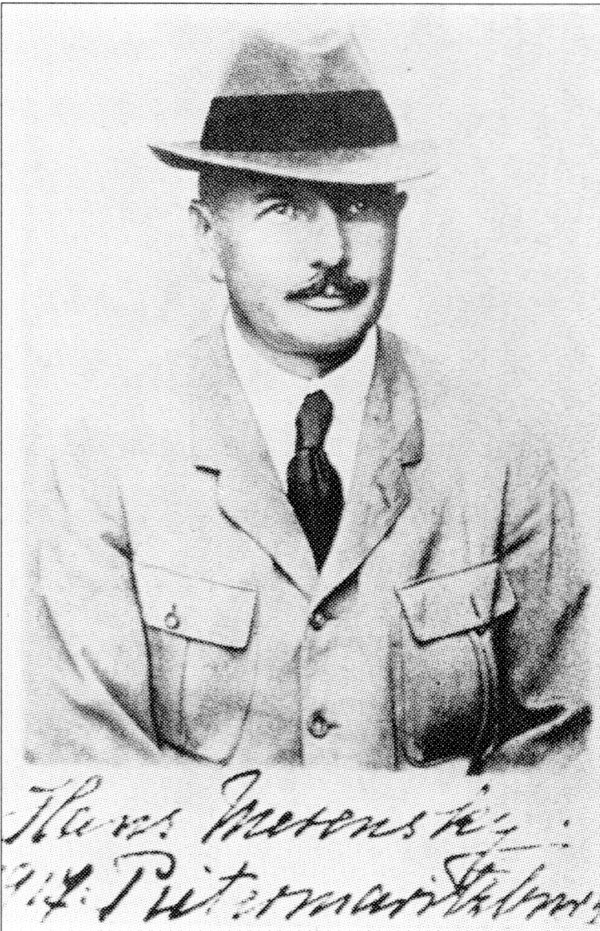 MERENSKY, Dr. Johannes (Hans), *16.3.1871 in Botshabelo near Middelburg (son of Berlin missionary and writer Alexander Merensky). Hans studied geology and mine engineering first in Breslau, then at the State Academy of Mining and the University of Berlin, Germany, returned to South Africa in 1904, geologist and discoverer of minerals in SA, predicted diamond finds in Namaqualand, discovered (among many others) a platinum reef near Lydenburg (named Merensky Reef in his honour). He became very wealthy and supported many educational institutions. +21.10.1952 on the farm Westphalia, South Africa. (10) (67)
MERENSKY, Dr. Johannes (Hans), *16.3.1871 in Botshabelo near Middelburg (son of Berlin missionary and writer Alexander Merensky). Hans studied geology and mine engineering first in Breslau, then at the State Academy of Mining and the University of Berlin, Germany, returned to South Africa in 1904, geologist and discoverer of minerals in SA, predicted diamond finds in Namaqualand, discovered (among many others) a platinum reef near Lydenburg (named Merensky Reef in his honour). He became very wealthy and supported many educational institutions. +21.10.1952 on the farm Westphalia, South Africa. (10) (67)
MOHR, Eduard - A German traveller and hunter who visited the Victoria Falls and Lobengula in 1870. Author of "To the Victoria Falls of the Zambesi", 1875. (64) (65)
MOSENTHAL, Joseph and Adolf, * Kassel, Germany (✡), arrived in the Cape in 1833, initially worked in the office of Kilian & Stein, set up as General Merchants in Cape Town in 1840, organised the first wool trading business between farmers in the Eastern Cape and Cape Town (2, 63). They went on to found Mosenthal & sons, one of the most successful diamond trading company, sold to De Beers in 1899. (67) (68)
MUND, Johannes Ludwig Leopold, *1791 Berlin, served in the Prussian army in the Napoleonic Wars where he met Louis Maire and Karl Bergius, then qualified as apothecary, was sponsored together with Maire to collect in the Cape colony from 1816, their work was not satisfactory and their contract was cancelled in 1821, Mund became a land surveyor in Plettenberg Bay, was bed-ridden from 1829, +1831 in Cape Town (33)
NEUMANN, Sigismund, * Germany, in 1896 established the Witbank Colliery with his colleague Samuel Stanford. S. Neumann was one of the diamond traders that was part of the Diamond Syndicate established in 1893 (67)
NELLMAPIUS, Hugo, *5.5.1847 Bielitz, Poland as Alois Hugo Neumann; arrived in South Africa 1873, friend of Paul Kruger, convinced the Volksraad to sell monopoly concessions to businesses to raise money. (67)
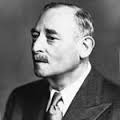 OPPENHEIMER, Ernest, * 22.5.1880, Friedberg, Hesse-Nassau, Germany (✡), arrived in South Africa in 1902, after spending a few years sorting diamonds in London, where had also became naturalised Briton, oo June 1906 - Mary (May) Pollak, was elected to the city council of Kimberley in 1908, was three-time mayor of Kimberley (from 1912 until he was forced to resign in 1915 due to anti-German riots, despite his efforts of raising a second battalion of the Kimberley Regiment), industrialist, financier, and one of the most successful leaders in the mining industry in South Africa and Rhodesia. Established the Anglo-American Corporation of South Africa on 25.9.1917 with American Capital. In 1919 formed Consolidated Diamond Mines (CDM) by taking over the diamond fields in South West Africa (Namibia), the previously German colony administered by South Africa from 1914 onwards. In 1921 he was knighted for his war efforts and was elected to parliament in 1924, where he remained until 1938. Also in 1924 he became chairman of the newly formed African Explosives and Industries group (African Explosives and Chemical Industries from 1944, and abbreviated to AECI in 1972). Took over control of De Beers in 1929 from his cousin Fritz Hirschhorn. He expanded his control of gold mining in the Orange Free State from 1940 to 1945, and took control of a number of smaller mining houses which became part of Anglo-American. +25.11.1957, Johannesburg, South Africa. (7) (53) (54) (55)
OPPENHEIMER, Ernest, * 22.5.1880, Friedberg, Hesse-Nassau, Germany (✡), arrived in South Africa in 1902, after spending a few years sorting diamonds in London, where had also became naturalised Briton, oo June 1906 - Mary (May) Pollak, was elected to the city council of Kimberley in 1908, was three-time mayor of Kimberley (from 1912 until he was forced to resign in 1915 due to anti-German riots, despite his efforts of raising a second battalion of the Kimberley Regiment), industrialist, financier, and one of the most successful leaders in the mining industry in South Africa and Rhodesia. Established the Anglo-American Corporation of South Africa on 25.9.1917 with American Capital. In 1919 formed Consolidated Diamond Mines (CDM) by taking over the diamond fields in South West Africa (Namibia), the previously German colony administered by South Africa from 1914 onwards. In 1921 he was knighted for his war efforts and was elected to parliament in 1924, where he remained until 1938. Also in 1924 he became chairman of the newly formed African Explosives and Industries group (African Explosives and Chemical Industries from 1944, and abbreviated to AECI in 1972). Took over control of De Beers in 1929 from his cousin Fritz Hirschhorn. He expanded his control of gold mining in the Orange Free State from 1940 to 1945, and took control of a number of smaller mining houses which became part of Anglo-American. +25.11.1957, Johannesburg, South Africa. (7) (53) (54) (55)
OPPENHEIMER, Bernhard and Louis, *Friedeberg, Hesse-Nassau, Germany (✡), elder brothers of Ernest, who had been working in Kimberley for A. Dunkelsbuhler ~1892. Both returned to London before 1902. (54)
PAPPE, Karl Wilhelm Ludwig, *1803, Hamburg, Germany, studied medicine and botany in Leipzig, arrived in Cape Town in 1831 to establish a medical practice. He was an avid botanist, worked in von Ludwig's Garden, and he began performing extensive investigations of South African flora. He would later earn the title of "colonial botanist", and in 1858 became the first professor of botany at South African College. His personal herbarium, including the collection he acquired from his colleague Karl Ludwig Philipp Zeyher, became the nucleus of the South African Museum herbarium. Pappe published a list of South African Plants in 1833-34, published a small volume on the medicinal use of plants in 1847. He was aware of the uniqueness of the SOuth African flora and became a proponent of conservation to prevent species form going extinct. +14.10.1862 (37) (38)
PIROW, Hans, *1892, brother of Oswald Pirow, Government Mining Engineer in 1930, wrote on silicosis in the mines in South Africa. In 1935 he presented a speech ‘Gold mining in South Africa’ at the University of the Witwatersrand, under the auspices of the Workers' Educational Union, issued by the Witwatersrand University Press, Johannesburg. Co-author of I.G. Irvine, A. Mavrogordato and Hans Pirow, ‘A Review of the History of Silicosis on the Witwatersrand Goldfields’, in Silicosis, 200 or 203. At least 2 streets in Johannesburg were called after Hans Pirow: one in Selby and one in Bruma (22)
PIROW, Oswald Pirow (* 14.8.1890 in Aberdeen, Cape Colony; +11.10.1959 in Pretoria) was a South African lawyer and far right politician. He attended school in South Africa and Germany and studied law in Kiel, Germany and London. He worked as a lawyer in Pretoria from 1913. He was first elected to parliament in 1924. From 1929-1933 he was Minister of Justice and from 1933-1939 Minister of Defence and Minister of South Africa in the government of Barry Hertzog. He founded the South African Airways (SAA). He was sidelined after 1940 because of his extreme right-wing views. A street in Cape Town was named after him, but was renamed in Christiaan Barnard's honour in 2011. (23)
POHLMANN (/ POLEMANN), P. H., apothecary, ran a pharmacy in Strand Street, financed Carl and Franz Drege (37)
REINECKE, Dr Leopold, consulting geologist at Gold Fields around 1930, employed Krahmann in 1930 to conduct magnetic mapping of "gold gap" between Randfontein and Klerksdorp. (67)
REYERSBACH, Louis; * Germany, Director of Consolidated Mines until he was forced to resign at the start of WW1 (53)
ROSENDORFF, Hans; * Germany, brother of Gertrude Rosendorff and brother-in-law of George Albu, kept his German nationality and was forced to leave Johannesburg in 1915. He left for Portuguese East Africa (Mozambique) where he was interned. Albu negotiated his release and return to Johannesburg. (53)
ROSETTENSTEIN, Leo (✡), a smaller prospector, who gave his name to Rosettenville (2) (4)
SAUER, Dr Hans, Johannesburg's first district surgeon. In April 1887 a small hospital was set up in a small corrugated iron building in which he worked. Sauer Street in central Johannesburg houses The Star newspaper offices and the ANC headquarters. (Sauer Street was renamed Pixley ka Isaka Seme Street in 2014) (11)
SCHAERER, Theophile, *17.11.1874 Zurich, Switzerland, trained in Winterthur, Stuttgart, Milan and Paris. After qualifying in 1896 he started working in Paris. He arrived in South Africa in 1903, and worked mostly in Johannesburg. Among his designs are the Friedenskirche Lutheran Church in Hillbrow and the Great Synagoge in Joubert Park. He left for London in 1915 and returned to Johannesburg in 1935. +20.12.1948, Architect, (12)
SCHENCK, Adolf, *4.4.1857 Siegen, Westfalia, Germany, educated at Ostern, Bonn and Berlin, employed by Mineralogisches Institut, Bonn in 1884. Travelled to Angra Pequena (Walvis Bay) at the invitation of Adolf Lüderitz in 1884 to look for copper bearing deposits in the souther areas of what is now Namibia. He also travelled to the north of Namibia and travelled to the Transvaal via the Orange Free State nad Natal, and on to Botswana and Mozambique. By 1895 he had returned to Germany where he became professor of Geography at Halle, +15.9.1936 Halle, Germany (60)
SCHMIDT, Rudi, member of the building committee for the new German Country Club of Johannesburg in 1986. +<2010 (30)
SCHOENFELDER, Eberhard Bruno Willie, *31.8.1892, educated in Deutsche Koloniale Hochschule, Witzenhausen, 1911-13. Emigrated to South West Africa (now Namibia) in April 1913, worked on various farms, was manager of the Farmers' Union in Grootfontein, travelled widely in Southern Africa from 1923-34 and collected ~1800 botanical specimens. His notes on vegetation were published in Petermanns Geogr. Mitteilungen in 1935. Interned during WW2. After his release he managed farm between Kroondal and Rustenburg. +23.12.1969 Kroondal (60)
SCHOLL, Georg, from Weilbach, Germany, gardener at Schönbrunn botanic garden in Vienna. Was sent to the Cape together with Franz Boos to collect plants for the royal garden. Arrived in Cape Town in May 1786. Travelled throughout the Cape Colony for 14 years. Returned to Europe in 1799 with a very large amount of cargo. (60)
SCHÖNLAND / SCHONLAND, Selmar, *15.8.1860 Frankenhausen, Germany as Selmar Schönland, earned a doctorate at the University of Hamburg, took a post at Oxford University (1886–1889) as curator of the Fielding Herbarium and a lecturer in Botany. Came to the Eastern Cape in 1889 to take up an appointment as curator of the Albany Museum in Grahamstown and developed it into the second largest herbarium in South Africa. Schonland was the founder of the Botany Department at Rhodes University starting in 1904 and built it up to be a centre for taxonomic research and learning in South Africa. +22.4.1940 Grahamstown, Cape Province. (42) (60)
SCHRAMM, Jobst Hieronymus Paul, *3.2.1807 in Hamburg, Germany. In Hamburg he worked as a tinsmith. On the 23.11.1833 he married Maria Henriette Steffen. In 1838 he emigrated to South Africa without his wife and daughter Amanda. In Cape Town he worked for the trading and shipping company N.H. Lütgens. After this company went bankrupt, he moved to Cradock. Here he met Maria Catharina Bekker with whom he had an illegitimate child. Maria Catharina Bekker was born on the 7.1.1832 in George. His wife in Germany divorced him on 6.6.1851. He and Maria Catharina Bekker moved to Colesberg (1856), Bloemfontein (1858-1864), Potchefstroom (1865-1869) and finally Zeerust (1870-1874). In Bloemfontein he worked as a Police Sergeant, in Potchefstroom as tinsmith and in Zeerust he was a Police Seargeant (Hoofdconstabel) and warden (Hoofdcipier). Maria Catharina Bekker died between 1866 and 1869. Hieronymus Schramm died on the 17.6.1874 in Zeerust. (62)
SCHRÖTER, Carl, *19.12.1855 Esslingen, Germany, educated in Zurich and Berlin, appointed lecturer in Botany in 1878, completed his PhD in 1880 and became a professor in 1884. He visted South Africa in 1926-27. +7.2.1939 Zurich. (60)
SCHWARZ, Ernest Hubert, Geologist, +19.12.1928 in Senegal, Ernest Schwartz Street in Kensington was named after him (13)
SCHWARZ, Harry (Heinz), 13.5.1924, Cologne, Germany (✡), left Germany for South Africa in 1934, lawyer and long-time anti-apartheid politician, ambassador to the USA 1991-1994, +5.2.2010 Johannesburg (14)
SEYDEL, Richard Heinrich Wilhelm, *4.10.1885 Bielefeld, Germany, educated in Freiburg and Göttingen, graduated with PhD in 1910, emigrated to South West Africa (Namibia) in 1912 and farmed in the Karibib area until ~1950, collected ~4 400 botanical specimens in central Namibia. (60)
SIEBER, Franz Wilhelm, (30.3.1789 – 17.12.1844[1]), */+ Prague, was a botanist and collector who travelled to Europe, the Middle East, Southern Africa and Australia. He partnered with Karl Zeyher in a collecting trip to Southern Africa. Sieber continued to Mauritius and Australia, while Zeyher stayed in Africa. Sieber collected plants, animals and ethnographic objects. On his return he picked up Zeyher's collection but never paid him for it. He became progressively more erratic with age and was placed in the Prague insane asylum for the last 14 years of his life. (39) (40)
SONNENBERG, Isaac (Ikey) (✡); one of the first gold prospectors on the Rand (2)
STAPFF Friedrich Moritz, *26.10.1836 Gerstungen, Saxony, Germany, studied geology and mining engineering in Freiberg and Jena, Dr. phil. in 1861. Worked in Sweden (1857-69), USA and Mexico (1869-1871) and on the St. Gotthard tunnel (1873-1882). Visited the Hope Mine near Walfish Bay and copper deposits in Kuiseb in then German South West Africa (Namibia) from 1885-86. Appointed geology lecturer in Berlin in 1893. Travelled to German East Africa (Tanzania) in 1895 to investigate gold deposits. +17.10.1895 Tanga, Tanzania (60)
STEINGRÖVER, Josef, *Essen Germany, accompanied F.A.W. Lüderitz on an expedition to the Orange River to look for mineral deposits (with Iselin, a Swiss geologist, and Hodkins / Hoskins, a Scottish miner), they set off by wagon from Angra Paquena (Lüderitz Bay), to Aus and Betanien, followed the Koniep River south to the Orange River, and paddled down the Orange River in two small canvas boats. Lüderitz and Steingröver decided to complete the journey to Angra Pequena by boat and were lost at sea. +25.10.1866 near the Orange River mouth. (60)
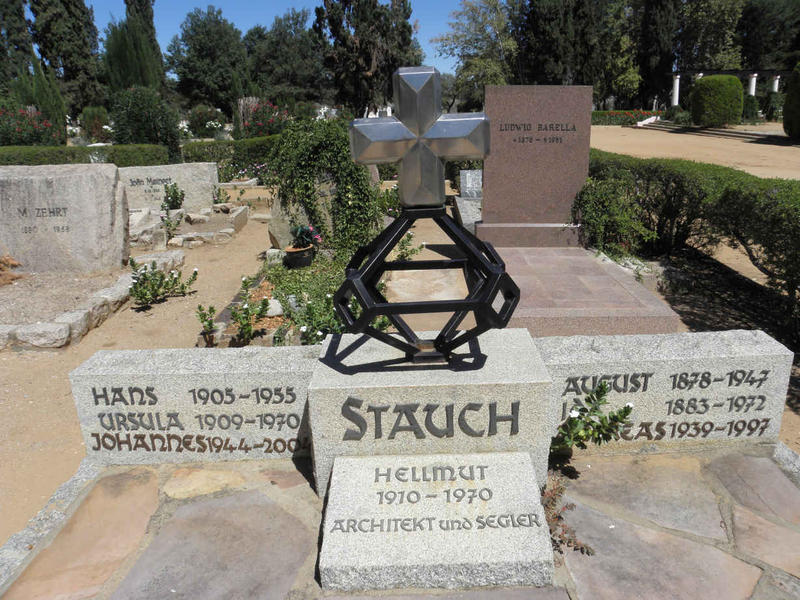 STAUCH, Hellmut Wilhem Ernst, *10.3.1910 in Eisenach, Germany. His father, August Stauch, was the discoverer in 1907 of the diamond fields in German South West Africa (now Namibia). Hellmut was educated at the Ittenschule in Berlin. He designed his first building for Africa in 1929 and travelled to Africa for the construction. He returned to Germany and worked in Berlin. He was a keen sailor, and was invited to sail for Germany in 1933 but declined for political reasons. In 1935 he emigrated to South Africa and settled in Pretoria, where he designed a number of private houses and public buildings. +19.7.1970, [] Windhoek (15) (56)
STAUCH, Hellmut Wilhem Ernst, *10.3.1910 in Eisenach, Germany. His father, August Stauch, was the discoverer in 1907 of the diamond fields in German South West Africa (now Namibia). Hellmut was educated at the Ittenschule in Berlin. He designed his first building for Africa in 1929 and travelled to Africa for the construction. He returned to Germany and worked in Berlin. He was a keen sailor, and was invited to sail for Germany in 1933 but declined for political reasons. In 1935 he emigrated to South Africa and settled in Pretoria, where he designed a number of private houses and public buildings. +19.7.1970, [] Windhoek (15) (56)
STRAKOSCH, Heinrich (Henry), *9.5.1871 in Hohenau, Austria. Educated in Vienna and England. Joined the Anglo-Austrian Bank in 1891 and quickly rose to become foreign exchange manager. He emigrated to South Africa in 1895 and joined A. Goerz & Co. in 1896 as assistant managing director. Became chairman in 1924 (the company was now called Union Corporation) until his death. Negotiated with Jan Smuts to prevent General Mining (48% German shareholding) and A Goerz & Co (55% German shareholding) to be sold during WW1. Advised the government on the founding of the South African Reserve Bank. Personal friend of Winston Churchill. +30.10.1943 near London. (46) (53)
STREY, Rudolf Georg, *28.4.1907 Templin, Uckermark, Germany, ed. in Potsdam 1928-29, emigrated to South West Africa (Namibia) in 1929, farmed Buellsport near Rehoboth 1930-1950, interned during WW2 at Andalusia with a number of leading botanists, sold his farm in 1950 moving first to Stellenbosch and then to the Transvaal in 1952. He was appointed as technician at the National Herbarium in Pretoria in 1952 and transferred to the Natal Herbarium in Durban in 1962. Retired in 1972 but stayed at the herbarium for 3 years before settling near Margate on the Natal South Coast. Collected ~9 000 botanical samples. (60)
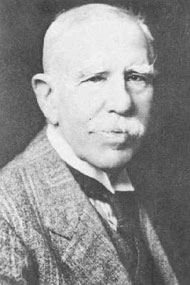 STRUBEN, Frederick (Fred), *1851 Pietermaritzburg (his father had emigrated from Germany in 1840). After his parents had died in 1869, Fred moved to Pretoria, where he worked as an assistant to his brother Harry. Interested in geology and rock formations, he visited the diamond diggings in Kimberley. An illness prompted his return to his brother Harry's farm at the Willows. In 1882 Fred tried his luck again at the Barberton gold rush but returned to Pretoria when that goldrush ended. A farmer, Louw Geldenhuys, who owned the farm Wilgespruit on the Witwatersrand asked Fred to review some rock samples from his farm, which were similar to the rocks in Barberton. In 1884 Fred discovered traces of gold on the farm Sterkfontein, which neighboured the farm Wilgespruit, and which his brother Harry had bought. Fred and Harry together bought the eastern portion of the farm Wilgespruit and found more gold there. They founded the Confidence Reef Mine, but by 1885 the reef was running dry. Fred had made enough money and retired to a large estate in Devon in England in 1888. He died at the age of 80 in 1931. (6) (16)
STRUBEN, Frederick (Fred), *1851 Pietermaritzburg (his father had emigrated from Germany in 1840). After his parents had died in 1869, Fred moved to Pretoria, where he worked as an assistant to his brother Harry. Interested in geology and rock formations, he visited the diamond diggings in Kimberley. An illness prompted his return to his brother Harry's farm at the Willows. In 1882 Fred tried his luck again at the Barberton gold rush but returned to Pretoria when that goldrush ended. A farmer, Louw Geldenhuys, who owned the farm Wilgespruit on the Witwatersrand asked Fred to review some rock samples from his farm, which were similar to the rocks in Barberton. In 1884 Fred discovered traces of gold on the farm Sterkfontein, which neighboured the farm Wilgespruit, and which his brother Harry had bought. Fred and Harry together bought the eastern portion of the farm Wilgespruit and found more gold there. They founded the Confidence Reef Mine, but by 1885 the reef was running dry. Fred had made enough money and retired to a large estate in Devon in England in 1888. He died at the age of 80 in 1931. (6) (16)
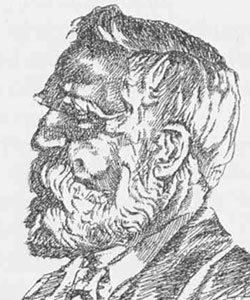 STRUBEN, Henry (Harry). Harry's father had emigrated from Germany in 1840. In 1856, Harry bought his first span of oxen and became a transport rider between Durban and Pretoria. In 1862 he bought a farm 'the Willows' in Pretoria, where he settled, with his wife and seven children. After his father died in 1869, Harry took over responsibility for his five siblings. Fred and Harry visited Kimberley after diamonds were discovered there in 1871, but returned to Pretoria because Fred took ill. Once Fred had detrmined that some of the rocks on the farm Wilgespruit on the Witwatersrand might be gold-bearing, Harry bought the neighbouring farm Sterkfontein. They found only traces of gold on Sterkfontein, and then Harry and Fred together bought the eastern portion of the farm Wilgespruit, where they discovered more gold and started the Confidence Reef Mine, but by 1885 the reef was running dry. Harry, stayed long enough to be appointed the first president of the Chamber of Mines in 1887. In 1889 he retired to Cape Town, and lived in a suburban mansion until his death, at the age of 75, in 1915. Struben's Valley in Roodepoort was named after the brothers. (6) (16)
STRUBEN, Henry (Harry). Harry's father had emigrated from Germany in 1840. In 1856, Harry bought his first span of oxen and became a transport rider between Durban and Pretoria. In 1862 he bought a farm 'the Willows' in Pretoria, where he settled, with his wife and seven children. After his father died in 1869, Harry took over responsibility for his five siblings. Fred and Harry visited Kimberley after diamonds were discovered there in 1871, but returned to Pretoria because Fred took ill. Once Fred had detrmined that some of the rocks on the farm Wilgespruit on the Witwatersrand might be gold-bearing, Harry bought the neighbouring farm Sterkfontein. They found only traces of gold on Sterkfontein, and then Harry and Fred together bought the eastern portion of the farm Wilgespruit, where they discovered more gold and started the Confidence Reef Mine, but by 1885 the reef was running dry. Harry, stayed long enough to be appointed the first president of the Chamber of Mines in 1887. In 1889 he retired to Cape Town, and lived in a suburban mansion until his death, at the age of 75, in 1915. Struben's Valley in Roodepoort was named after the brothers. (6) (16)
STUMPF, Heinrich Wilhelm, *27.10.1841 in Rückershausen, Hessen, Germany. He studied at the University of Marburg and became teacher. He worked as teacher in Warzenbach and Lehnhausen till 1873. On 9. Apr. 1865 he married Barbara Elisabeth Nasz. During childbirth of his second child, his wife passed away. He married again on the 5 Dez. 1869 to Katharina Maria Röse. She was born on the 7th May 1845 in Frankenberg, Hessen, Germany. Heinrich Stumpf, his wife, and four children emigrated to South Africa in 1876 on the Dunrobin Castle. He first lived in Dundee to learn English and Dutch. From 1877-1884 he was head teacher at the German School Morgensonne near Rustenburg. Following a request by his wife’s brother-in-law, missionary Engelbrecht, he moved to the missionary station Ekhombela in northern Natal to become teacher of the children of the German immigrants in that area. He subsequently became head teacher at the German school in Lüneburg and later on at the school in Paulpietersburg. He was also the Resident Vrederechter of Paulpietersburg. He was a self-learned theologian and homeopathic healer. During the Boer War he and his family were interned in the Volksrust Concentration camp. After the war the family moved back to Paulpietersburg. His wife Katharina Röse +11.5.1904 due to kidney failure. Heinrich Stumpf was a prolific writer and poet. He wrote numerous poems on the Boer War, the first World War as well as numerous religious poems and plays. +6.10.1921 on the farm Bergheim near Paulpietersburg. (61)
TARNOW, Otto, member of the German Club of Johannesburg and 6-times South African gymnastics champion from 1930 to 1935. (30)
THALWITZER, Maximilian (✡), a wool merchant and foundation shareholder of the University of Cape Town (2)
THEILER, Arnold, *26.3.1867 in Frick, Switzerland, immigrated to South Africa in 1891, founder of the Onderstepoort Veterinary Research Institute, +24.7.1936 (17)
THODE, Hans Justus, *1859 Germany?, emigrated to Cape Town in 1885 or 6, started collecting botanical specimens as he travelled eastwards through Kaffraria, and the Transkei to Natal in 1890. He climbed various mountains in the Drakensberg range between 1891 and 1894, where he collected many specimens and described the alpine plants in an article in 1894. He sent duplicate specimens to Berlin-Dahlem but not for financial gain. Instead he acted as tutor on farms and mission schools to support himself, collecting in the area, and then moved on to a new area. He covered many areas in South Africa, collecting about 9200 specimens. +1.6.1932 in Durban in poverty. (60)
TRIEBNERWilhelm, *8.3.1883 Königsee, Thüringen, Germany, came to German South West Africa as a soldier in 1904, he stayed on as gardener and then farmer, in 1931 started a nursery in Windhoek specializing in succulent plants, especially Hoodia. +8.10.1957 Windhoek (60)
ULLMANN, Ernest, *1900 Munich (✡), artist, left Germany in 1935 and arrived in Cape Town in 1936, oo Jo; built a house and lived on Fairlea Farm beside the Litte Jukskei River (Sandspruit) for 30 years (Ullmann Park), +1975 Johannesburg. (18)
UNGER, Moritz, diamond buyer in Kimberley in the 1850s, known as "the great diamond merchant" (2)
VOGELSANG, Heinrich Christian Friedrich, *17.3.1862 Bremen, Germany. Spent 1877-79 in King Williams Town, then returned to Bremen, where he met F.A.E. Lüderitz, +23.5.1914 Bremen
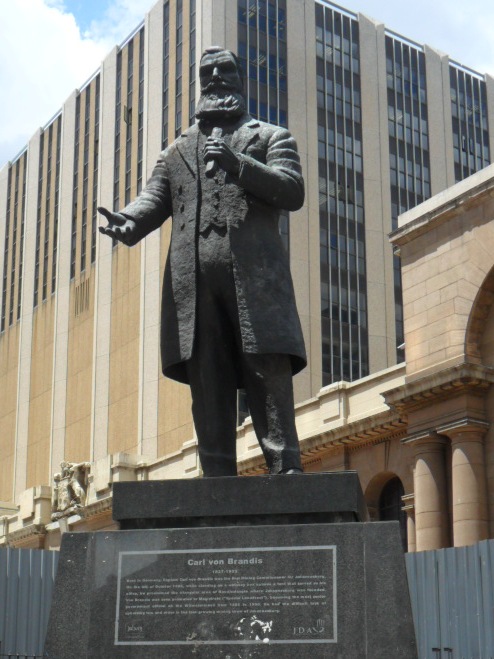 von BRANDIS, Carl, captain, mining commissioner and landdrost (magistrate), *1827 Burgdorf, Hannover, Germany, served in the Austro-Hungarian army, joined the British German Legion to fight in the Crimean but was sent out to the Cape instead as a military settler, was private secretary to President Brand of the OFS, moved to the Transvaal and worked in the Public Prosecutor's office in various towns before becoming landdrost in Middelburg; from 1881 in State Attorney's office in Pretoria, 1886 became first mining commissioner for the new Witwatersrand goldfield, initially stationed in a tent. When the British took over the Transvaal he remained in his position. He retired at the age of 75, only a few days before his death, +June 1903. He was renowned for his wisdom, tact and never-ending endeavor to improve life for the citizens of the Witwatersrand. A street in central Johannesburg was named after him. (19)
von BRANDIS, Carl, captain, mining commissioner and landdrost (magistrate), *1827 Burgdorf, Hannover, Germany, served in the Austro-Hungarian army, joined the British German Legion to fight in the Crimean but was sent out to the Cape instead as a military settler, was private secretary to President Brand of the OFS, moved to the Transvaal and worked in the Public Prosecutor's office in various towns before becoming landdrost in Middelburg; from 1881 in State Attorney's office in Pretoria, 1886 became first mining commissioner for the new Witwatersrand goldfield, initially stationed in a tent. When the British took over the Transvaal he remained in his position. He retired at the age of 75, only a few days before his death, +June 1903. He was renowned for his wisdom, tact and never-ending endeavor to improve life for the citizens of the Witwatersrand. A street in central Johannesburg was named after him. (19)
von FRANCOIS, Hugo, *12.5.1861 Reichenbach, Silesia, Germany, younger brother of Curt von FRANCOIS, second luitenant in Prussian army, attached to colonial section of the department of foreign affairs, led a group of 21 soldiers on a mission to South West Africa (Namibia), meeting his brother enroute in Teneriffe. The party landed at Walvis Bay and initially settled at Omaruru to negotiate with the local chief. They later founded Windhoek. von Francois accompanied his brother on a series of trips; he returned to Europe in 1894 but settled as a farmer at Otjihase near Windhoek in 1901. +13.3.1904 Ovikokorero, Namibia during the Herero uprising. (60)
von FRITSCH, Alexander Freiherr. Lieutenant in the German army and later farmed in Grootfontein area, where he also collected botanical specimens around 1902. (60)
von GADOW, Klaus, *19.5.1941 Rostock, educated in Freiburg 1966-68, emigrated to South Africa in 1969, worked for Department of Forestry at Saasveld (1969-72), Kologha (1972) and King Williams Town (from 1973). (60)
von SCHLICHT, Albert Wilhelm Hugo, *27.7.1817 Zielenzig, Brandenburg, Germany, trained as pharmacist, came to Cape Town in 1834 to work as apothecary, chemist and druggist, he had a business at the corner of Dorp and Loop Street in Cape Town from 1847-53. He then travelled to Namaqualand and to Swakopmund, but settled at Concordia near Port Nolloth, in 1969 he was appointed as justice of the peace, collected botinical specimens in Little Namaqualand, +23.3.1893 Klipfontein, Namaqualand. (60)
von SCHLICKMANN, Conrad, German Cavalry officer in the war of 1870, then attache of Count von Arnim in Paris. After the defeat by Bismarck, von Schlickmann left and next appeared in Kimberley in an uprising of the diggers in 1875. He then served in the Transvaal until his death in one of the many skirmishes with the African population. (25) (67)
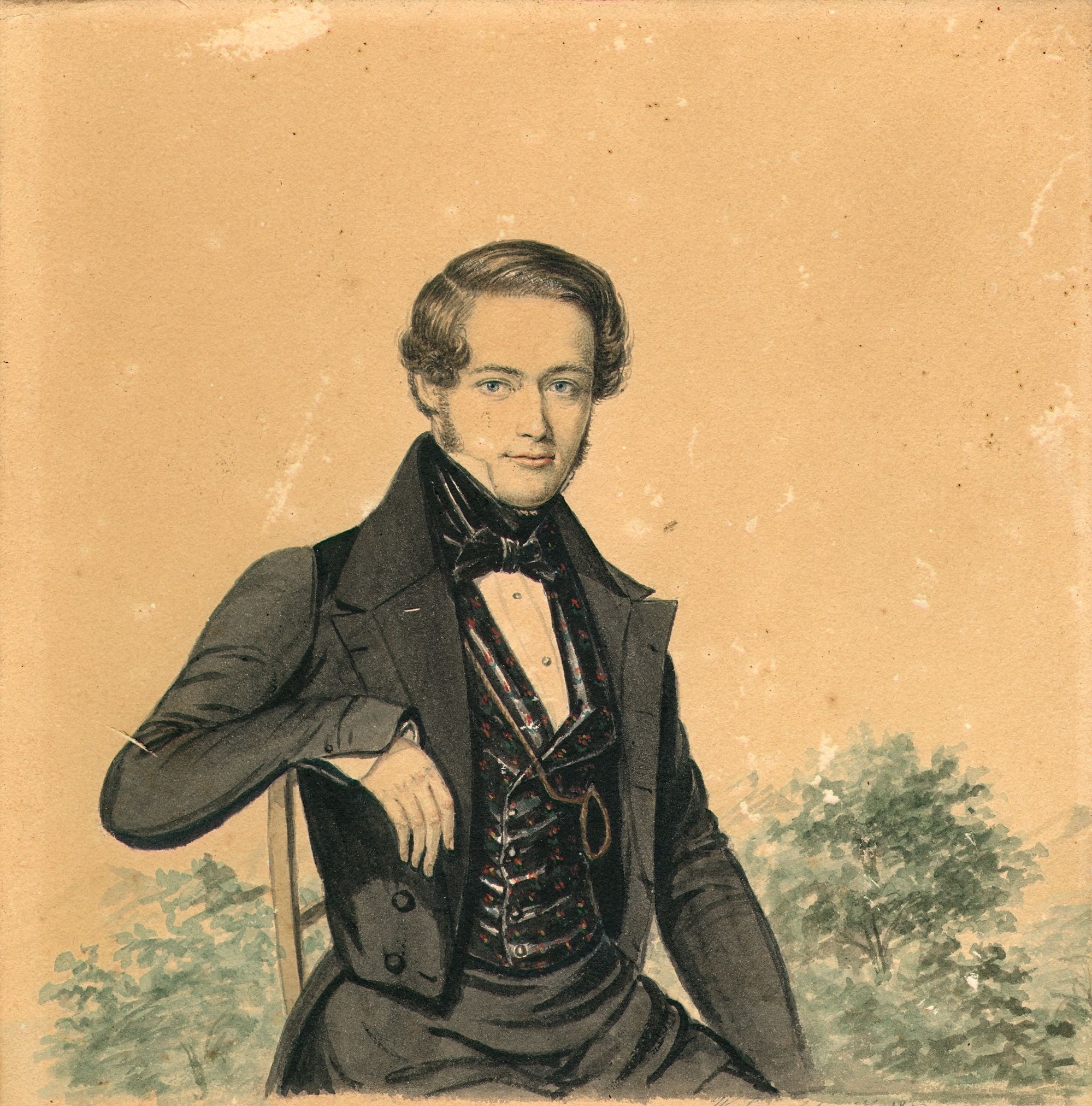 von SCHMIETERLÖW, Carl August Wilhelm, immigrated to the Cape Colony in 1838, possibly with the painter LANGSCHMIED. Worked as assistant pharmacist to Carl Friedrich JURITZ in the 'Angel Dispensary' in Loop Street, Cape Town. In 1845 he set up an independent pharmacy at 73 Strand Street or corner of Adderley & Shortmarket Street. He collected botanical specimens around Cape Town. In 1869 he returned to Germany. His widow gave his study herbarium, collected around Neuwied in Germany to the Cape Government Herbarium. (20)
von SCHMIETERLÖW, Carl August Wilhelm, immigrated to the Cape Colony in 1838, possibly with the painter LANGSCHMIED. Worked as assistant pharmacist to Carl Friedrich JURITZ in the 'Angel Dispensary' in Loop Street, Cape Town. In 1845 he set up an independent pharmacy at 73 Strand Street or corner of Adderley & Shortmarket Street. He collected botanical specimens around Cape Town. In 1869 he returned to Germany. His widow gave his study herbarium, collected around Neuwied in Germany to the Cape Government Herbarium. (20)
von TROTHA, *3.7.1848 Magdeburg, Germany, soldier, served in wars against Denmark (1864) and France (1870-1), commander of armed forces in German East Africa (Tanzania) 1894-7, then in German South West Africa (Namibia) 1904-1905 during the Herero uprising. (60)
WAGNER, Percy Albert, *18.10.1885 Richmond, Cape Colony, trained as geologist in Germany, economic geologist and author of articles on diamonds, iron, tin, platinum and the Bushveld Igneous Complex that earned him international recognition, +11.11.1929 Johannesburg (21)
WALLACH, Heinz, *24.1.1916 in Soest, Westphalia, Germany (✡?), to Ernst and Clara Wallach. His father was a grain merchant. As conditions in Germany worsened in 1936 Heinz and his sister Elsbeth managed to immigrate to Johannesburg, South Africa. His first job was at the Coligny Granary in the Western Transvaal, where he worked from 1936-1938. After which he went back to Johannesburg and studied at night school. He then worked for Domestic and Foreign Trade, an importing house established by a German Jew, until the mid sixties, except for the period during World War II , in which he fought in the South African army. oo April 1949 - Ida Kooperberg (Ida's family had been hidden from the Nazis in Holland and had immigrated to Johannesburg after the war.) (1)
WELWITSCH, Friedrich Martin Josef, (25.2.1806 at Maria Saal (Slovene: Gospa Sveta), Duchy of Carinthia, Austrian Empire – 20.10.1872), studied medicine and botany in Vienna and worked as a physician in the Austrian provinces of Carniola and Moravia, 1839 abandoned his medical profession, became director of botanical garden in Portugal, and collected on the Canary Islands, on Madeira and in Angola, then a Portuguese colony. He is most famous for discovering the Welwitschia mirabilis in the Namib Desert in Southern Angola, a plant that has leaves that can continue to grow for 2000 years. In 1863 he moved to London and worked in Kew. (41)
WERNHER, Julius, *9.4.1850 Darmstadt, Hesse, Germany, moved to London in 1871 at the age of 21. He was sent to South Africa by Jules Porges of London and Paris as his agent. He became a partner in Porges' company in 1875 and this was renamed Wenher, Beit & Co. when Porges retired in 1889. Wernher moved back to London in 1884, while his partner Alfred Beit sayed in South Africa. Wernher, Beit & Co. had a controlling interest in de Beers Consolidated Mines, the Central Mining and Investment Corporation as well as Rand Mines. He left £250,000 to establishing a university in Cape Town, and £100,000 to the Imperial College of Science and Technology in London. He was one of the wealthiest men in Britain at his death and was a great collector of art.
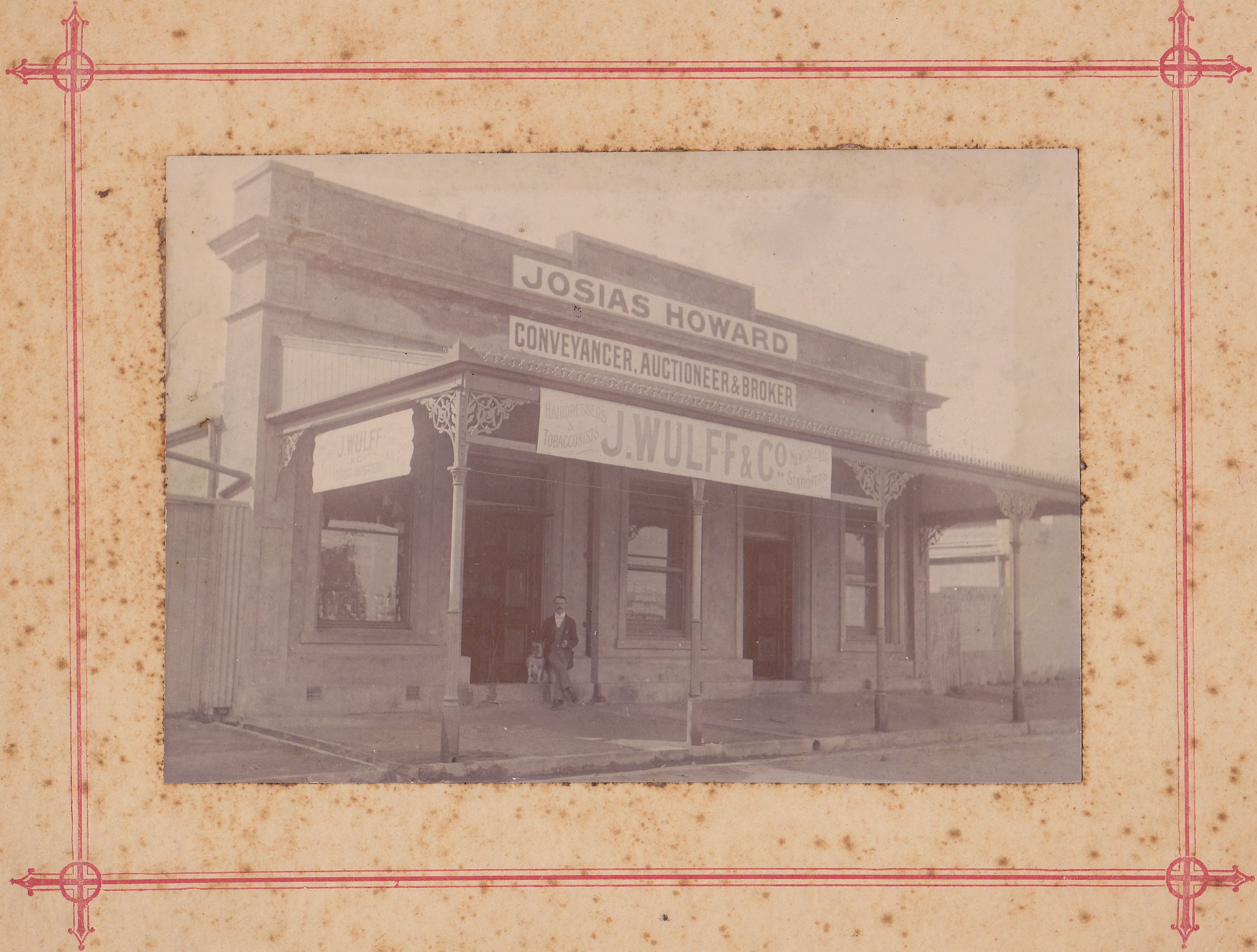
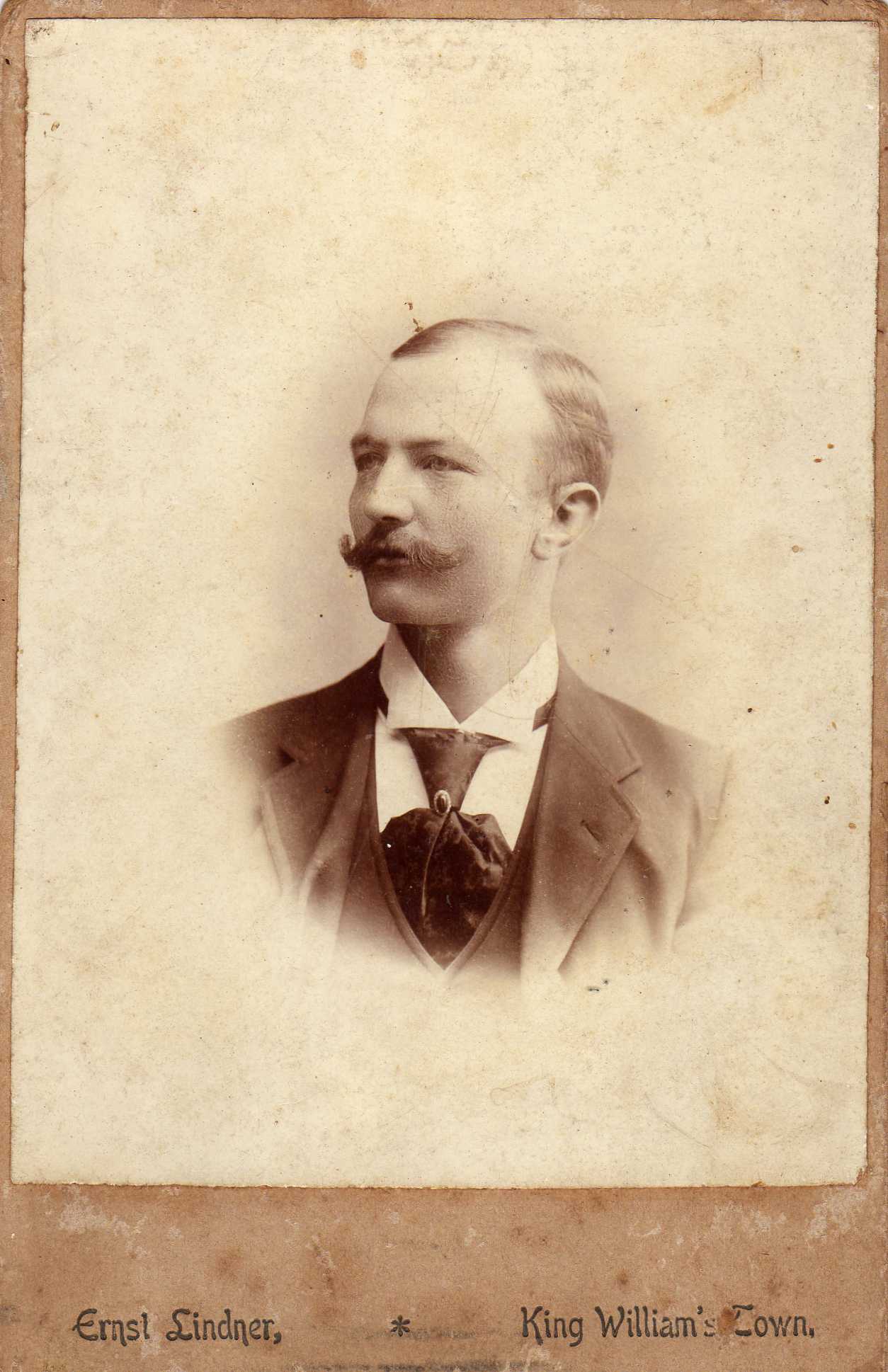 WULFF, Johann Norbert, *1869 in Arnsberg i/Westfalen. He trained as a hairdresser/barber. After his training, he walked from Düsseldorf to Rome in about 1890. He likely spent some time in London before taking a ship from Southampton to Cape Town in 1895. He settled in King William's Town and started J. Wulff & Co Newsagent, Tobacconist and Fancy Goods' as well as a hairdressing salon. On a trip back to Germany in 1906 he met his future wife in Berlin and within a couple of months took her back to South Africa. (Information and pictures provided by A. Xavier)
WULFF, Johann Norbert, *1869 in Arnsberg i/Westfalen. He trained as a hairdresser/barber. After his training, he walked from Düsseldorf to Rome in about 1890. He likely spent some time in London before taking a ship from Southampton to Cape Town in 1895. He settled in King William's Town and started J. Wulff & Co Newsagent, Tobacconist and Fancy Goods' as well as a hairdressing salon. On a trip back to Germany in 1906 he met his future wife in Berlin and within a couple of months took her back to South Africa. (Information and pictures provided by A. Xavier)
ZEYHER, Karl Ludwig Philipp (2.8.1799 Dillenburg, Hessen, Germany - 13.12.1858 Cape Town). In 1816 Zeyher was apprenticed to his uncle Johann Michael Zeyher who was head gardener at the ducal gardens of Schwetzingen. Here he met Franz Sieber and together they left for Africa in August 1822. Zeyher collected extensively in the Western Cape from Uitenhage and north of Clanwilliam until 1828. From 1829 he cooperated with Christian Friedrich Ecklon, a Danish collector, travelling extensively until 1831. They cooperated on a trip to Kaffraria in 1831-1832 and authored Enumeratio Plantarum Africae Australis (1835-7), a descriptive catalogue of South African plants. Zeyher also participated in an expedition into the African interior with Joseph Burke in 1840-1842. (39)
Notes:
* = born
oo = married
+ = died
✡ = Jewish
Dates are given in the format dd.mm.yyyy
References:
1) www.geni.com/projects/South-African-Settlers-Jewish/9736
2) www.ajr.org.uk/journalpdf/1956_december.pdf pg. 6 German Jews in South Africa, Immigrants during the 19th Century by C. C. Aronsfeld
3) www.geni.com/people/Franz-Auerbach/6000000006850929929
4) www.joburg.org.za/index2.php?option=com_content&task=view&id=1902&pop=1&page=0&Itemid=203
5) M. Kaplan via www.joburg-archive.co.za/2011/inner_city/fordsburg_mayfair/heritage_history.pdf
6) www.joburg.org.za/index.php?option=com_content&view=article&id=271:early-pioneers-the-struben-brothers&catid=38:heritage&Itemid=51
7) www.joburg.org.za/index.php?option=com_content&id=1109&Itemid=168
8) www.sahistory.org.za/people/sir-julius-jeppe
9) www.sahistory.org.za/people/g%C3%BCnther-komnick
10) www.sahistory.org.za/people/dr-hans-merensky
11) joburg.org.za/index.php?option=com_content&task=view&id=277&Itemid=51
12) www.artefacts.co.za/main/Buildings/archframes.php?archid=1481&countadd=1
13) www.sahistory.org.za/dated-event/prof-ernest-hubert-schwarz-55-sa-geologist-and-geographer-dies-senegal
14) www.sahistory.org.za/people/harry-heinz-schwarz
15) www.artefacts.co.za/main/Buildings/archframes.php?archid=1614&countadd=0
16) www.joburg.org.za/index.php?option=com_content&view=article&id=6025:take-a-tour-of-confidence-reef&catid=88&Itemid=266
17) www.sahistory.org.za/people/arnold-theiler
18) www.heritageportal.co.za/article/ernest-ullmann-munich-berlin-johannesburg
19) www.fak.org.za/afrikanergeskiedenis/wp-content/uploads/sites/2/2011/12/Carl-von-Brandis-landdros-van-Johannesburg.pdf?f49404
20) Private correspondence from Mag. Raphaela Toncic-Sorinj, Vienna
21) www.sahistory.org.za/dated-event/percy-albert-wagner-44-german-trained-sa-geologist-dies-johannesburg
22) Jock McCulloch, "South Africa’s Gold Mines & the Politics of Silicosis", Jacana Media (Pty) Ltd., Johannesburg, 2012 ISBN 978-1-4314-0718-7
23) de.wikipedia.org/wiki/Oswald_Pirow en.wikipedia.org/wiki/Oswald_Pirow
24) en.wikipedia.org/wiki/Henno_Martin
25) Carl Jeppe, "The Kaleidoscopic Transvaal", J.C. Juta and Co., Cape Town, 1906
26) Arthur Keppel-Jones, "Rhodes and Rhodesia - The White Conquest of Zimbabwe 1884-1902", McGill-Queen's University Press, Kingston and Montreal, 1983, ISBN 0-7735-0534-2
27) Joerg Bauer, "The Flight of the Phoenix - Investing in Zimbabwe's Rise from the Ashes during the Global Debt Crisis", epubli GmbH, Berlin, 2013, ISBN-13:978-3844262124, www.flightofphoenix.eu
28) www.artefacts.co.za/main/Buildings/archframes.php?archid=864&countadd=1
29) www.geni.com/people/Max-Langermann/6000000017635458193
30) germancountryclub.co.za/
31) en.wikipedia.org/wiki/Georg_Ludwig_Engelhard_Krebs
32) en.wikipedia.org/wiki/Karl_Heinrich_Bergius
33) en.wikipedia.org/wiki/Mund_and_Maire
34) en.wikipedia.org/wiki/Johann_Franz_Dr%C3%A8ge
35) www.invaluable.com/auction-lot/isaac-louis-drege-south-african-1853-1921-thirty-363-c-54e2eb41f4
36) en.wikipedia.org/wiki/Rudolf_Marloth
37) William Beinart, "The Rise of Conservation in South Africa: Settlers, Livestock, and the Environment 1770-1950", Oxford University Press, Oxford, 2003 ISBN 978-0-19-926151-2
38) en.wikipedia.org/wiki/Karl_Wilhelm_Ludwig_Pappe
39) en.wikipedia.org/wiki/Karl_Ludwig_Philipp_Zeyher
40) en.wikipedia.org/wiki/Franz_Sieber
41) en.wikipedia.org/wiki/Friedrich_Welwitsch
42) en.wikipedia.org/wiki/Selmar_Schonland
43) en.wikipedia.org/wiki/George_Albu
44) www.referenceforbusiness.com/history2/22/Gencor-Ltd.html
45) en.wikipedia.org/wiki/Adolf_Goerz
46) www.historiography-project.com/jhrchives/v21/v21n1p-9_butz.html
47) www.natalia.org.za/Files/36-37/Natalia%2036-37%20pp21-33%20C.pdf
48) www.thewanderersclub.co.za/wp-content/uploads/2012/03/chapter3.pdf
49) info.goldavenue.com/Info_site/in_arts/in_civ/in_rush_safrica.html
50) en.wikipedia.org/wiki/Hermann_Eckstein
51) www.thepeerage.com/p12264.htm
52) www.thepeerage.com/p6210.htm
53) www.brenthurst.org.za/Dr.%20Anne%20Samson%20Mining%20Magnates%20Talk%207.11.2012.pdf
54) David Pallister, Sarah Stewart and Ian Lepper, "South Africa Inc. - The Oppenheimer Empire", Corgi Books published by Transworld Publishesr Ltd., London, 1988
55) www.sahistory.org.za/dated-event/mining-magnate-oppenheimer-dies
56) www.eggsa.org/library/main.php?g2_itemId=2553255
57) www.sahistory.org.za/dated-event/julius-gottlieb-jeppe-72-seller-most-original-stands-johannesburg-dies-johannesburg
58) www.sahistory.org.za/dated-event/julius-gottlieb-jeppe-founder-jeppe-and-ford-estate-company-planned-first-johannesburg-s
59) www.sahistory.org.za/people/sir-julius-jeppe
60) Mary Gunn, L.E.W. Codd, "Botanical Exploration in Southern Africa", CRC Press, 1981
61) STUMPF Heinrich Wilhelm on www.stamouers.com
62) SCHRAMM Jobst Hieronymus Paul on www.stamouers.com
63) Adam Yamey, "Exodus to Africa", Lulu.com, 2015
64) Eric Rosenthal, "RHODESIAN JEWRY AND ITS STORY, Part 1
65) B.S.A.C. Historical Catalogue & Souvenir of Rhodesia, Empire Exhibition,
Johannesburg, 1936-37
66) Arthur Glyn Lenard, How We Made Rhodesia, London, 1896
67) Jade Davenport, Digging Deep - A History of Mining in South Africa 1852-2002, Jonathan Ball Publishers, Johannesburg & Cape Town, 2013, ISBN 978-1-86842-423-8
68) Stuart Jones, Banking and Business in South Africa, Palgrave Macmillan, 1988, ISBN 978-1-349-09634-3
Anfang |
Deutsche in Südafrika |
Genealogie |
Kirchen |
Buchhinweise |
Email
Home |
Germans in South Africa |
Genealogy |
Churches |
References |
Email
 ALBU, George, *26.10.1857 in Berlin, Brandenburg, Germany (✡), emigrated to South Africa in 1876 together with his brother Leopold. Initially he worked in Cape Town, then moved to Kimberley and bought up financial interests which he sold to de Beers at a good profit. He then moved on to the Witwatersrand, where he bought the Meyer and Charlton Mine, restructured it and formed the General Mining and Finance Corporation with his brother in 1895. oo 9.12.1888 - Gertrude Rosendorff. he was created 1st baronet Albu of Johannesburg on 12.2.1912. +27.12.1935 in Johannesburg. (General Mining was taken over by Federale Mynbou in 1965, but kept the General Mining name. It joined with Union Corporation in 1980 to become Gencor. Gencor was split up in 1997, with the gold assets now held by Gold Fields Ltd.) (43) (44) (49) (52)
ALBU, George, *26.10.1857 in Berlin, Brandenburg, Germany (✡), emigrated to South Africa in 1876 together with his brother Leopold. Initially he worked in Cape Town, then moved to Kimberley and bought up financial interests which he sold to de Beers at a good profit. He then moved on to the Witwatersrand, where he bought the Meyer and Charlton Mine, restructured it and formed the General Mining and Finance Corporation with his brother in 1895. oo 9.12.1888 - Gertrude Rosendorff. he was created 1st baronet Albu of Johannesburg on 12.2.1912. +27.12.1935 in Johannesburg. (General Mining was taken over by Federale Mynbou in 1965, but kept the General Mining name. It joined with Union Corporation in 1980 to become Gencor. Gencor was split up in 1997, with the gold assets now held by Gold Fields Ltd.) (43) (44) (49) (52)













